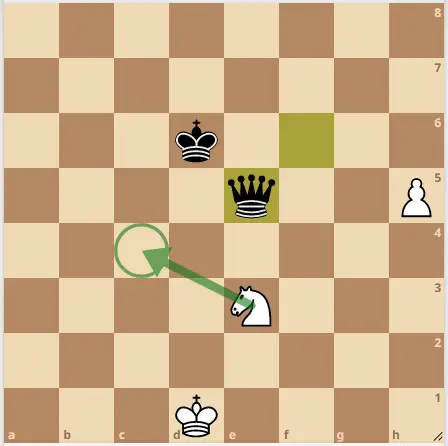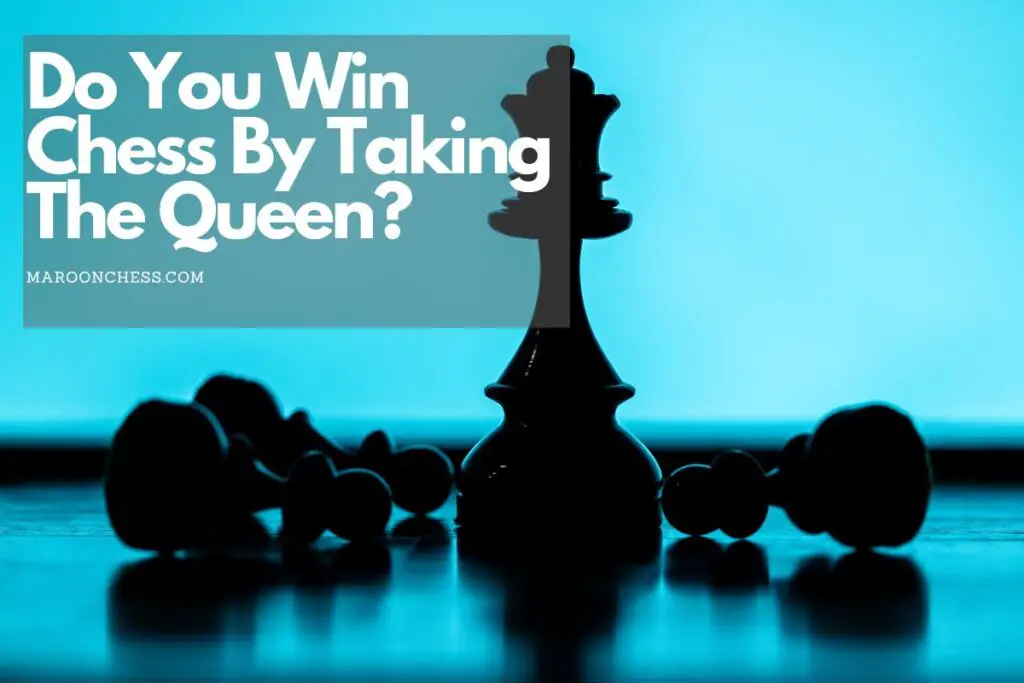The queen is the most powerful and versatile piece in the game of chess, capable of exerting significant influence over the board and posing serious threats to the opponent’s pieces and king.
As a result, capturing the opponent’s queen is often seen as a major milestone in a game of chess, and players may instinctively prioritize taking their opponent’s queen as a key objective in their strategy.
But does capturing the queen necessarily lead to victory in chess?
In this article, we will explore the role of capturing the queen in winning chess games, examining its benefits, drawbacks, and the broader strategic considerations that come into play in a game of chess.
Winning a game of chess typically does not solely hinge on capturing the opponent’s queen, as there are many other factors to consider.
Capturing the queen, which is the most powerful piece in chess, can certainly be a significant advantage as it removes a formidable piece from your opponent’s arsenal.
However, winning a game of chess usually requires a combination of strategic planning, tactical maneuvers, and thoughtful play to outmaneuver your opponent’s pieces, control the board, and ultimately checkmate their king.
While capturing the opponent’s queen can be a favorable move, it is not always necessary to win a game of chess.
Skilled players can still achieve victory even if their queen is captured, as the outcome of a game depends on the overall position and coordination of all the pieces on the board, including the remaining minor and major pieces, pawns, and the king.
It is possible to compensate for the loss of the queen by exploiting weaknesses in the opponent’s position, coordinating your own pieces effectively, and creating threats to the opponent’s king.
How Do You Win Chess?
In order to win a game of chess, you typically need to achieve checkmate, which is a position where the opponent’s king is under attack and has no legal squares to move. Here are some general strategies and tips that can help you in your pursuit of victory in chess:
Develop your pieces
At the beginning of the game, it’s important to quickly develop your pieces (knights, bishops, rooks) and control the center of the board. This allows your pieces to have maximum influence on the board and helps with future moves.
Safeguard your king
Protecting your king is crucial. Keep your king safe by castling early, which involves moving your king to a safer position and connecting your rooks. This helps to fortify your king’s safety and prepares your rooks for potential future attacks.
Control the center
The center of the chessboard is a critical area to control, as it allows you to exert influence over the entire board. Controlling the center can help you establish a strong position from which you can launch attacks and defend effectively.
Plan ahead
Chess requires strategic planning. Formulate a plan based on the position and piece coordination, and work towards implementing it. Anticipate your opponent’s moves and try to visualize the potential consequences of each move.
Coordinate your pieces
Coordinate your pieces to work together as a team. Create threats, control key squares, and coordinate your pieces to support each other’s movements. This can lead to opportunities to capture opponent’s pieces or launch attacks.
Exploit weaknesses
Look for weaknesses in your opponent’s position, such as undefended pieces, poorly placed pawns, or exposed king. Exploit these weaknesses by tactically targeting them with your pieces to gain an advantage.
Time management
Managing your time effectively is crucial in chess, especially in timed games. Avoid time pressure and make sure to use your time wisely to calculate moves, evaluate positions, and make informed decisions.
Be mindful of tactics
Chess is often decided by tactical maneuvers. Look for tactical opportunities such as forks, pins, skewers, and discovered attacks that can help you gain material advantage or deliver checkmate.
Endgame proficiency
The endgame is the final phase of the game where the board becomes less crowded. Familiarize yourself with basic endgame principles, such as king and pawn endgames, and learn common checkmating patterns to finish the game successfully.
Remember that chess is a complex game that requires practice, patience, and experience to master. Studying classic games, analyzing your own games, and learning from your mistakes can help you improve your skills and increase your chances of winning.
How To Take Your Opponent’s Queen?
Trapping and capturing your opponent’s queen in chess can be a significant achievement, as the queen is the most powerful piece on the board. Here are some general strategies and tactics that can help you trap and capture your opponent’s queen:
Pins
A pin is a tactic where one piece attacks an opponent’s piece in a way that the piece being attacked cannot move without leaving a more valuable piece undefended. You can use a pin to target your opponent’s queen with another piece, such as a bishop or a rook, and force their queen to be captured or move to a less favorable position.
White bishop pins the black queen to the king.

Forks
A fork is a tactic where one piece attacks two or more opponent’s pieces simultaneously. You can use a fork to attack your opponent’s queen along with another less valuable piece, forcing them to choose which piece to save and potentially leaving their queen vulnerable. A fork can also be used to attack the king and queen, thereby causing the opponent to give up his queen.

Trapped Queen
You can create a situation where your opponent’s queen has limited squares to move and becomes trapped. This can be done by controlling the squares around the queen with your own pieces, such as knights or pawns, and limiting their escape options.
Trapped Queen

See related post: Top 5 queen traps
Overloading
Overloading is a tactic where you create multiple threats against one of your opponent’s pieces, forcing them to prioritize defending that piece over their queen. This can create an opportunity to capture their queen or force it to move to a less advantageous position.
Luring
You can lure your opponent’s queen to a vulnerable position by creating bait, such as an undefended pawn or piece, and tempting your opponent’s queen to capture it. Once their queen moves to that square, you can capitalize on the opportunity to capture it or gain a material advantage.
White lures the black queen into capturing the poisoned pawn on b2
Coordination
Coordinate your pieces effectively to attack your opponent’s queen from multiple angles. Use your pieces in combination to create threats and force your opponent’s queen to move into a vulnerable position.
Exploiting Weaknesses
Look for weaknesses in your opponent’s position, such as unprotected pieces, poorly defended squares, or awkwardly placed pawns, and exploit these weaknesses to attack their queen and potentially capture it.
It’s important to note that trapping and capturing your opponent’s queen requires careful planning, calculation, and accurate evaluation of the resulting positions. Be mindful of your opponent’s possible counterplay and potential threats, and always consider the safety of your own pieces and king while executing these tactics.
Can You Win Chess By Taking The King?
In chess, the ultimate goal is not to capture the opponent’s king, but rather to achieve checkmate, which is a position where the opponent’s king is under attack and cannot escape capture.
Capturing the opponent’s king directly is not a legal move in chess, as the game is won by placing the opponent’s king in checkmate, not by capturing the king itself.
To achieve checkmate, you need to position your pieces and pawns in a way that the opponent’s king has no legal moves to escape capture.
This can involve using your pieces to attack the opponent’s king and restrict its movement, coordinating your pieces to create threats against the king, and using your pawns to control key squares and limit the king’s escape options.
Once the opponent’s king is in a position where it cannot move safely, the game is won by achieving checkmate, and capturing the king is not necessary.
It’s important to understand the rules of chess and the objective of achieving checkmate in order to play the game correctly and win games based on the rules of chess.
Capturing the opponent’s king directly is not a valid way to win in chess, as it goes against the established rules and principles of the game.
Wrapping Up
While capturing the opponent’s queen can be a noteworthy accomplishment in chess, it is not always the sole determinant of winning the game.
Winning in chess requires a comprehensive strategy that encompasses various elements, including piece coordination, pawn structure, king safety, and tactical and positional considerations.
Capturing the queen can be advantageous in certain situations, as it can weaken the opponent’s position and give you a material advantage. However, it is not a guaranteed path to victory, as your opponent’s other pieces and overall position also play crucial roles in determining the outcome of the game.
It is essential to balance the capture of the queen with broader strategic considerations and to always be mindful of potential counterplay from your opponent. Ultimately, winning in chess requires a holistic approach that goes beyond simply capturing the queen, and understanding the nuances of the game is key to achieving success on the chessboard.


